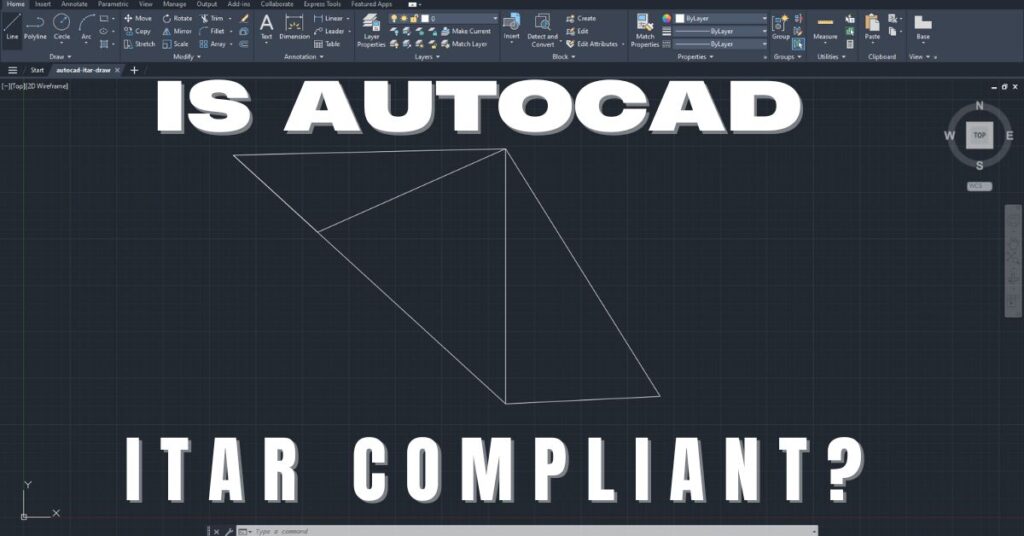ISO 27001 Compliance: Ensuring Effective Data Protection and Risk Management
In today’s digital age, data is the lifeblood of organizations. However, with the increasing volume and complexity of data, managing and securing it has become a significant challenge. The consequences of data breaches can be severe, including financial losses, damage to reputation, legal penalties, and loss of customer trust. Therefore, it is crucial for organizations to implement effective data protection and risk management practices. One such practice is compliance with the ISO 27001 standard.
History of ISO 27001
The ISO/IEC 27001 standard for Information Security Management Systems (ISMS) was first published in 2005 as a joint effort between the International Organization for Standardization (ISO) and the International Electrotechnical Commission (IEC). It was developed to provide a framework for organizations to establish, implement, maintain and continuously improve their information security management system.
The development of ISO/IEC 27001 was influenced by various security frameworks and standards, such as the British Standard for Information Security Management Systems (BS 7799), which was first published in 1995. The BS 7799 standard was later revised in 1999 and split into two parts, with Part 1 being adopted by ISO/IEC as the basis for the development of ISO/IEC 27001.
The ISO/IEC 27001 standard underwent its first revision in 2013, with updates to its structure and requirements, including a greater emphasis on risk management and increased alignment with other ISO management system standards. In 2017, another revision was made to the standard to further clarify its requirements and improve its usability.
Today, ISO/IEC 27001 is considered the leading standard for information security management systems and is used by organizations worldwide to protect their sensitive information and ensure effective risk management. It provides a systematic approach to managing and protecting sensitive information, including personal data, financial information, and intellectual property.
How Does ISO 27001 Work
ISO 27001 is a comprehensive standard for Information Security Management Systems (ISMS) that provides a framework for organizations to establish, implement, maintain and continuously improve their information security management system. Here’s how ISO 27001 works:
- Define scope and objectives: The first step in implementing ISO 27001 is to define the scope and objectives of the ISMS. This involves identifying the assets that need to be protected, the risks to those assets, and the goals and objectives of the organization.
- Conduct a risk assessment: Once the scope and objectives are defined, a risk assessment is conducted to identify the risks to the assets and determine their likelihood and impact. This helps to prioritize the risks and develop a risk treatment plan.
- Develop policies and procedures: Based on the risk assessment, policies and procedures are developed to address the identified risks and ensure compliance with ISO 27001 requirements. This includes policies and procedures for information security, access control, incident management, and business continuity.
- Implement controls: Once the policies and procedures are in place, controls are implemented to ensure that they are followed. This includes technical controls, such as firewalls and encryption, as well as administrative controls, such as training and awareness programs.
- Monitor and measure: To ensure the effectiveness of the ISMS, ongoing monitoring and measurement are essential. This includes regular reviews of policies and procedures, monitoring of security controls, and tracking of incidents and breaches.
- Continual improvement: ISO 27001 requires organizations to continually improve their ISMS, which involves identifying areas for improvement, implementing corrective actions, and monitoring the effectiveness of those actions.
- Certification: Organizations can choose to undergo an independent audit to achieve certification to ISO 27001. This involves a rigorous assessment of the organization’s ISMS against the ISO 27001 standard by an accredited certification body.
ISO 27001 Information Security Controls
Information security controls are a critical component of any effective information security management system (ISMS). ISO/IEC 27001 provides a comprehensive framework for organizations to implement information security controls to protect their information assets from unauthorized access, use, disclosure, alteration, or destruction.
The standard specifies a wide range of information security controls that organizations can implement based on their risk assessment and risk treatment decisions. These controls are organized into 14 categories, as follows:
- Information Security Policies: This category includes requirements for developing, implementing, and maintaining information security policies and procedures that are aligned with the organization’s business objectives and legal and regulatory requirements.
- Organization of Information Security: This category requires organizations to establish and maintain a clear and effective organizational structure for managing information security.
- Human Resource Security: This category outlines requirements for ensuring that employees and contractors understand their responsibilities and are aware of the importance of information security.
- Asset Management: This category requires organizations to identify and manage their information assets, including hardware, software, and data.
- Access Control: This category outlines requirements for controlling access to information assets based on the principles of least privilege and need-to-know.
- Cryptography: This category includes requirements for the use of encryption and other cryptographic techniques to protect sensitive information.
- Physical and Environmental Security: This category outlines requirements for protecting information assets against physical and environmental threats, such as theft, fire, and natural disasters.
- Operations Security: This category includes requirements for managing and controlling information processing facilities and equipment.
- Communications Security: This category outlines requirements for ensuring the confidentiality, integrity, and availability of information in transit.
- System Acquisition, Development, and Maintenance: This category requires organizations to implement security controls throughout the system development lifecycle, from requirements gathering to decommissioning.
- Supplier Relationships: This category outlines requirements for managing relationships with suppliers and ensuring that they comply with the organization’s information security requirements.
- Information Security Incident Management: This category includes requirements for establishing and implementing an incident management process to detect, respond to, and recover from information security incidents.
- Information Security Aspects of Business Continuity Management: This category requires organizations to develop and maintain business continuity plans that address information security risks.
- Compliance: This category includes requirements for monitoring and ensuring compliance with legal and regulatory requirements, as well as internal policies and procedures.
ISO 27001 is an internationally recognized standard that outlines the requirements for an information security management system (ISMS). It provides a systematic approach to managing and protecting sensitive information, including personal data, financial information, and intellectual property. ISO 27001 compliance involves implementing a framework for identifying and mitigating risks to information security, as well as ensuring continuous improvement of the ISMS.
Compliance with ISO 27001 can bring several benefits to organizations. Firstly, it helps organizations to identify and manage risks to their information security more effectively. This, in turn, helps to reduce the likelihood of data breaches and their associated costs. Secondly, compliance with ISO 27001 can enhance an organization’s reputation, as it demonstrates its commitment to protecting sensitive information. Thirdly, it can help organizations to comply with legal and regulatory requirements related to information security, such as the GDPR.
Structure of ISO 27001
The structure of the standard is designed to help organizations effectively manage their information security risks and ensure the confidentiality, integrity, and availability of their information. Let’s take a closer look at the structure of the standard.
Introduction: The introduction of the standard provides an overview of the purpose and scope of the standard. It outlines the key concepts and principles of the standard, including risk management, continuous improvement, and compliance with legal and regulatory requirements.
Section 1: Scope This section of the standard outlines the scope of the ISMS, including the types of information that need to be protected, the assets that need to be secured, and the business processes that need to be safeguarded. It also defines the boundaries of the ISMS and any exclusions that have been made.
Section 2: Normative References This section lists the normative references that are used in the standard. These are other standards or guidelines that organizations may need to refer to when implementing ISO/IEC 27001.
Section 3: Terms and Definitions This section provides a comprehensive list of terms and definitions used in the standard. It helps ensure that there is a clear and common understanding of the terms used in the standard.
Section 4: Context of the Organization This section requires organizations to identify and analyze their internal and external context, including the needs and expectations of interested parties. It also requires organizations to consider the risks and opportunities that may impact the ISMS.
Section 5: Leadership This section outlines the leadership responsibilities for establishing, implementing, maintaining, and continually improving the ISMS. It emphasizes the importance of top management’s commitment and involvement in the ISMS.
Section 6: Planning This section requires organizations to plan and develop their ISMS, including risk assessment, risk treatment, and the establishment of objectives and policies.
Section 7: Support This section outlines the resources and support needed for the effective implementation and operation of the ISMS. This includes competence, awareness, communication, documentation, and control of documents.
Section 8: Operation This section outlines the key operational controls and procedures that need to be implemented to ensure the effective operation of the ISMS. This includes information security risk assessment, management of information security incidents, and the protection of assets.
Section 9: Performance Evaluation This section requires organizations to monitor, measure, analyze, and evaluate the performance of the ISMS. It includes requirements for internal audits, management review, and the evaluation of compliance with legal and regulatory requirements.
Section 10: Improvement This section requires organizations to continually improve the effectiveness of the ISMS. It includes requirements for corrective action, preventive action, and continual improvement of the ISMS.
Implementing an ISMS in compliance with ISO 27001
Implementing an ISMS in compliance with ISO 27001 requires a thorough understanding of the standard’s requirements and a commitment to information security best practices. The following are the key steps involved in implementing an ISMS in compliance with ISO 27001:
- Define the Scope: The first step is to define the scope of the ISMS, which includes identifying the boundaries and limits of the system, the assets to be protected, and the risks that need to be managed.
- Conduct a Risk Assessment: The next step is to conduct a risk assessment to identify the potential risks to the information assets within the scope of the ISMS. This involves identifying the potential threats, vulnerabilities, and impacts associated with each asset.
- Develop and Implement Information Security Policies: Based on the results of the risk assessment, information security policies and procedures must be developed and implemented to address the identified risks. These policies and procedures should be aligned with the organization’s objectives, legal and regulatory requirements, and industry best practices.
- Implement Information Security Controls: Once the policies and procedures are in place, information security controls should be implemented to protect the information assets. These controls can include technical, physical, and administrative controls, such as access controls, encryption, and security monitoring.
- Perform Testing and Evaluation: The ISMS should be regularly tested and evaluated to ensure that it is functioning as intended and providing the necessary level of protection. This can include testing the effectiveness of the controls, conducting vulnerability scans, and performing penetration testing.
- Continually Improve the ISMS: Finally, the ISMS should be continually improved through the implementation of a continuous improvement process. This involves monitoring and measuring the performance of the ISMS, identifying areas for improvement, and implementing changes to address any identified weaknesses or gaps.
Conclusion
Compliance with ISO 27001 is crucial for organizations that want to protect their information assets and ensure effective risk management. Implementing an ISMS in compliance with ISO 27001 can help organizations to identify and mitigate risks, enhance their reputation, and comply with legal and regulatory requirements. Therefore, organizations should consider implementing an ISMS in compliance with ISO 27001 to ensure effective data protection and risk management.
Share in Social Media
See More Case Studies

Securing Defense Contracts: A DFARS 252.204-7012 Compliance Case Study
Discover how Cleared Systems helped a Federal Contractor successfully achieve DFARS 252.204-7012 compliance by strengthening its cybersecurity posture, giving it a competitive edge when bidding for DoD Contracts.

What is GCC High? For ITAR & CMMC 2.0
Microsoft 365 Government Community Cloud (GCC) High is a specialized cloud solution tailored for U.S. federal, state, local, tribal, and territorial government organizations, as well as for contractors who hold or process data subject to specific security regulations. In this article, we will explore the features, benefits, and differences between Microsoft 365 GCC High and other Office 365 offerings.

Is AutoCAD ITAR Compliant? A Comprehensive Guide for Defense Manufacturers
Defense contractors and manufacturers working with sensitive military technologies face a critical question when selecting computer-aided design software: Is AutoCAD ITAR compliant? This question becomes

How to Get Help in Windows: Guide to Security and Compliance Support
In today’s digital landscape, ensuring your computer systems are secure and compliant with industry regulations is essential for both businesses and individuals. Windows, as one

Microsoft Copilot for GCC High: Enhancing Security and Compliance
In today’s fast-evolving digital landscape, organizations that handle sensitive data, particularly those in government sectors or defense contractors, face growing pressure to maintain strict security
Partner with Us for Compliance & Protection
We’re happy to answer any questions you may have and help you determine which of our services best fit your needs.
Your benefits:
- Client-oriented
- Security
- Compliance
- Peace of mind
- Efficiency
- Trust
What happens next?
Schedule an initial meeting
Arrange a discovery and assessment call
Tailor a proposal and solution
